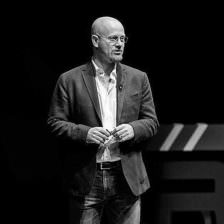You can stop waiting for the AI revolution to begin. It is officially underway. My recent experiments with publicly accessible tools have proven to me that the revolution is much farther along than most people think. And I don’t think we can do anything to stop it. Even if we wanted to.
I’ve been attempting to do some light illustrations of artificial intelligence writing assistants here on this blog for the last couple of weeks. My goal was to show what was possible with limited interaction from me personally. I let the bots just do their thing, for the most part. On my photo blog I’ve been doing a more interactive version of this experiment, but without telling anyone. For example, this line from My Favorite Moment, “Dad seemed irked and it felt as if he was trying to say something without saying it out loud,” was written by Jasper.ai, not by me.
The AI Revolution – Creativity As A Service
I’ve also included documentation for what I’ve utilized to create the featured images for those AI writing assistant posts. At the end of each post, I’ve highlighted the image, detailed the prompt used, and credited each software platform. I started with Craiyon.com and moved to Midjourney.com for my last post.
Since then, I’ve focused on experimenting with Midjourney and want to highlight this application today. So, what is Midjourney? Midjourney “is a research lab and the name of the lab’s popular artificial intelligence program that creates images from textual descriptions, similar to OpenAI’s DALL-E. The tool is currently in open beta.”
It is, quite frankly, mind-blowingly good. Let me illustrate by simply showing you a few of the images it created from single-word prompts (Grief, Celebration, Joy, Depression, Lonely, Laughing). To be clear, the only instruction given was a single word and an aspect ratio for the image. You can click on each image to see the prompt and to view it larger.






As with AI writing assistants like Jasper.ai, Midjourney (which is a Discord Bot), returns several examples for you to choose from. Once you see the results, you can choose to “upscale” one of the versions, regenerate the prompt for more variations, or force the bot to create a variation based on one of the results. It’s an unfathomably fast process and, I’ll say it again, it delivers mind-blowingly good results for something still in beta.
The Power Of Prompts
My goal here is not to provide a Midjourney tutorial. There are plenty of those in existence. The objective is to illustrate the incredible power of this tool to generate highly creative images with minimal input. I’ve decided that the best way to do that is to show you discrete variations by asking the bot to build images in different styles on the same single-word prompt.

The image above was one of the first prompts I put in after deciding to do this single-word experiment. It’s an image that was the result of the process you’ll see immediately below. The image on the left is the original returned examples, and the image on the right is a variation of the image in the upper left of the original four “anger” results.


My experiment’s next step was adding some “style prompts” into the mix. Style prompts basically tell the bot what kind of art you want it to create. Do you want something more abstract? How about in the Disney animation Style? Do you like a specific artist? Just about any artistic style or artist you can think of can be used to generate entirely new directions for the prompts. Below are some style examples.





I could quite literally go on forever, easily copying and pasting different artistic styles into the prompt instructions. The bot doesn’t care. It never tires. It just creates and creates and creates. And although it’s incredibly fast, I don’t watch the renders any longer. I’ll typically enter a few prompts and go about my business. I come back later to concepts I could barely have imagined.
Only The Beginning
What I’m showing you here is largely focused on this solitary single-word experiment. However, the level of detail you can push via Midjourney prompts and the quality of image results you can achieve will likely shock you. Take a look at these three sample images using slightly more specific prompts.



Further, we’re just scratching the surface. Here are two more examples. The first was generated from the prompt: “portrait of a beautiful woman with mask + scribble art, fractal mandelbulb + black on black + 8k” by user Cubes. The second was generated from the prompt: “a bronze-scaled dragonborn with numerous hornlike protrusions, dnd, fantasy, concept art, symmetrical face, reptilian features, beautiful bronze textured scales, glowing eyes, portrait, character portrait, rpg, Damien Guimoneau, Marcus Whinney, Keita Okada, Antonio J. Manzanedo, cinematic vision, ultra high detail, trending on artstation, 8k, high quality image + depth of field,” by user Hanhula.


Say Goodbye To Boring
I have a lot of thoughts on where this is heading. I’ll save those for another day. And to be very clear, numerous negative unintended (and perhaps unforeseeable) consequences will exist. But one thing I’m hopeful for is the end to boring stock images being used to illustrate blog posts. Because in this creative AI revolution, if you can write, you can illustrate.

[…] I pay for a Standar Midjourney Plan, the company has given me limited commercial rights to the images created using my text inputs […]